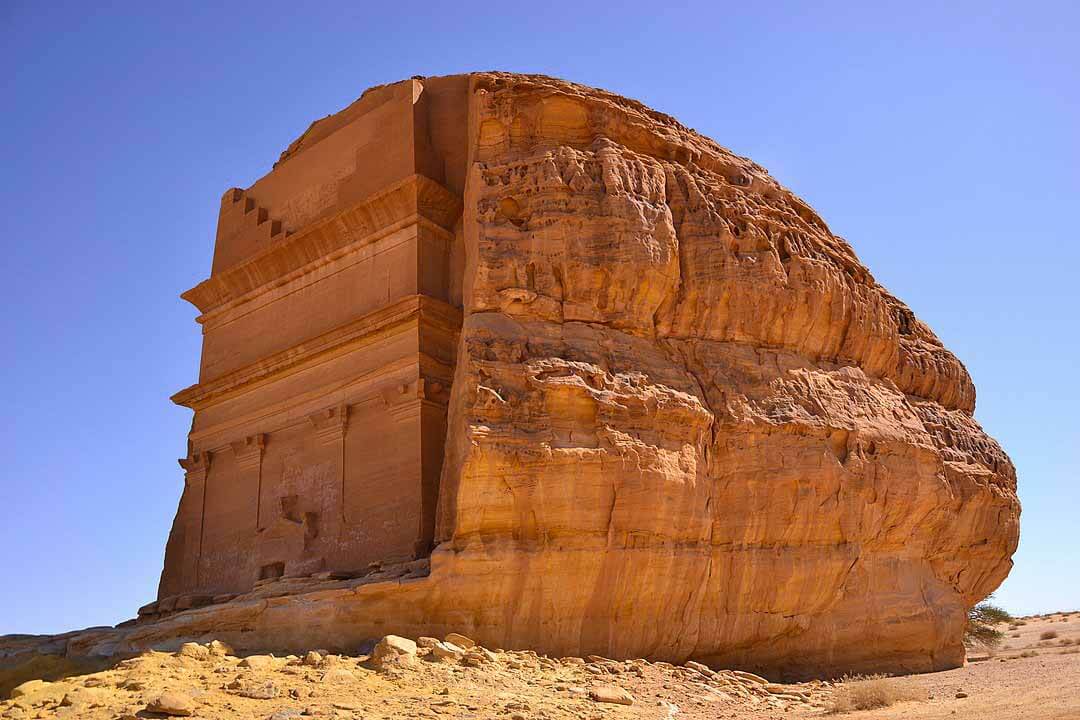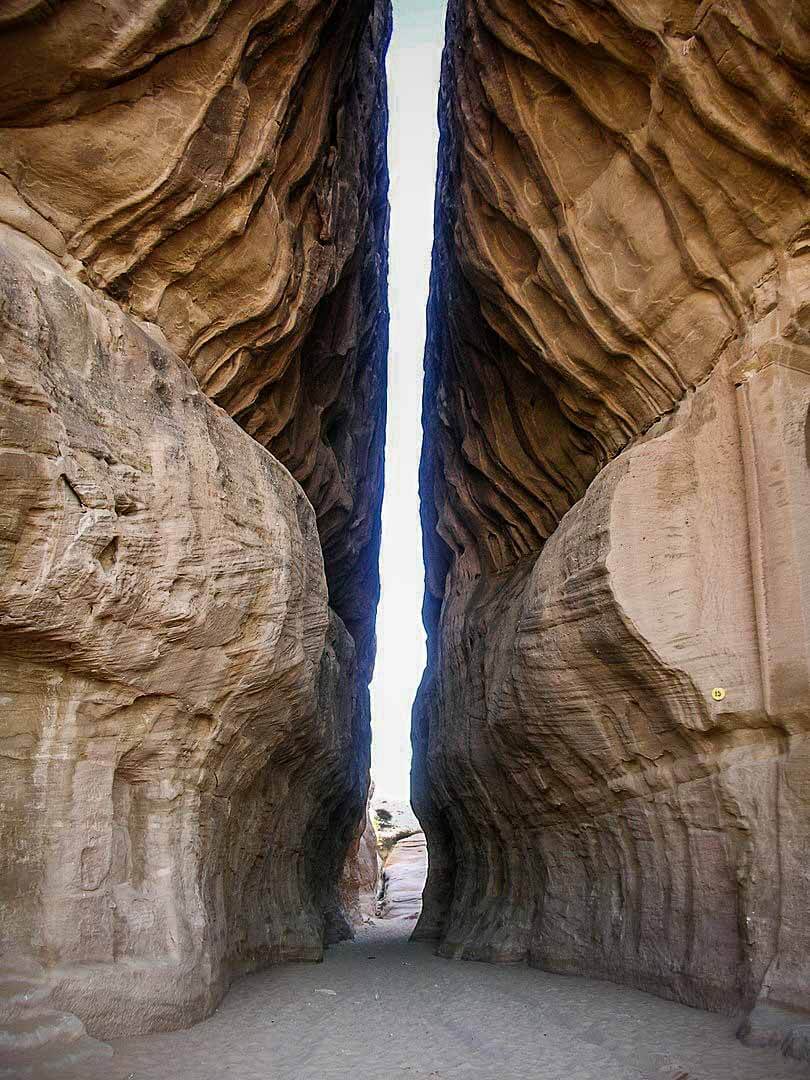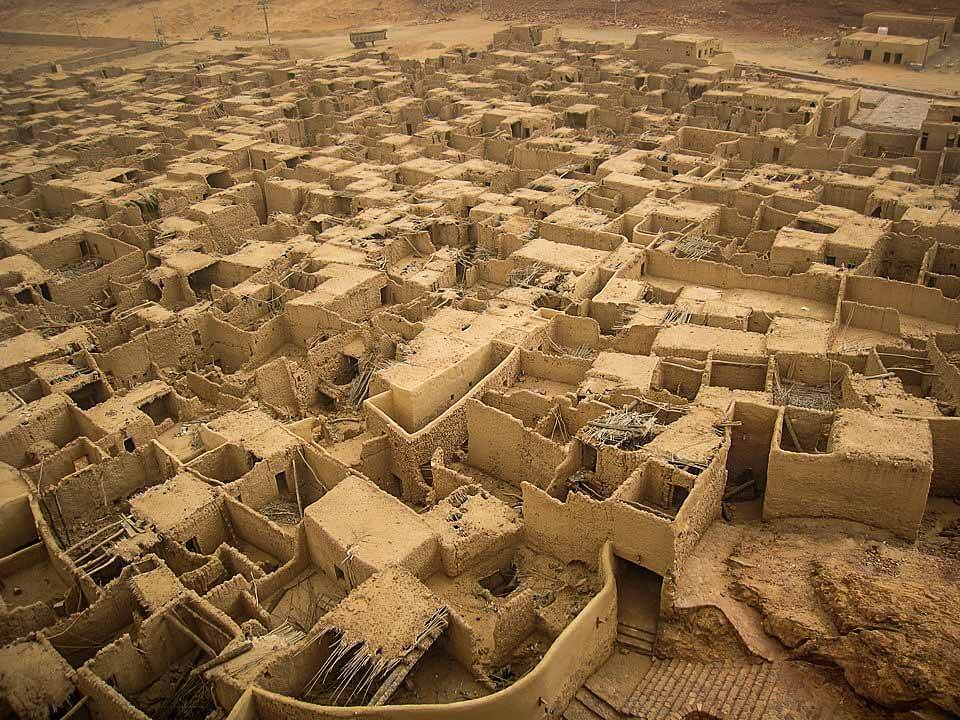Madain Saleh, Saudi Arabia












Coordinates: 26.791667, 37.952778
History
According to the exegesis, the Thamud were a powerful and idolatrous tribe living in Hegra — now called Madaʼin Salih, the Cities of Hz. Hz. Salih عليه اسلام — in northwestern Arabia.
According to Islamic tradition the site of Al-Hijr was settled by the tribe of Thamud, who “(took) for (themselves) palaces from its plains and (carved) from the mountains, homes”.
[Quran 7:73-79], [Quran 11:61-69], [Quran 15:80-84]
The tribe fell to idol worship, and oppression became prevalent. Hz. Salih عليه اسلام, to whom the site’s name of “Mada’in Salih” is often attributed, called on the Thamudis to repent.
The Thamudis disregarded the warning and instead commanded Salih to summon a pregnant she-camel from the back of a mountain. And so a pregnant she-camel was sent to the people from the back of the mountain, as proof of Hz. Salih’s عليه اسلام divine mission.
However, only a minority heeded his words. The non-believers killed the sacred camel instead of caring for it as they were told, and its calf ran back to the mountain from whence it came.
The Thamudis were given three days before their punishment was to take place, since they disbelieved and did not heed the warning.
Hz. Salih عليه اسلام and his Monotheistic followers left the city, but the others were punished by Allah — their souls leaving their lifeless bodies in the midst of an earthquake and lightning blasts.
A hadith tradition preserved in the Sahih al-Bukhari collection narrates that the Prophet Muhammad ﷺ called Hegra “the land of Thamud” and did not allow his troops to drink from its wells or to use its water, and to never enter its ruins “unless weeping, lest occur to you what happened to them.”
The stone constructions of Hegra are actually mostly from the Nabataean period, and especially the first century CE. The ninth-century Muslim scholar Ibn Saʿd believed that the Thamud were the Nabateans.
Hegra (Mada’in Salih)
Hegra (also known as Mada’in Salih lit. ‘Cities of Salih’), or Al-Hijr is an archaeological site located in the area of Al-Ula within Al Madinah Region in the Hejaz, Saudi Arabia.
A majority of the remains date from the Nabatean kingdom (1st century AD).
The site constitutes the kingdom’s southernmost and largest settlement after Petra (modern-day Jordan), its capital.
The Quran places the settlement of the area by the Thamudi people during the days of Hz. Salih عليه اسلام, between those of Hz. Nuh عليه اسلام and Hz. Hud عليه اسلام on one hand, and those of Hz. Ibrahim عليه اسلام and Hz. Musa عليه اسلام on the other.
However, a definitive historical chronology can not be obtained through the order of verses due to the fact that the Quranic chapters (see Surah) deal with different subjects in non-chronologic order.
According to the Islamic text, the Thamudis were punished by Allah (Allah) for their practice of idol worship, being struck by an earthquake and lightning blasts. Thus, the site has earned a reputation as a cursed place.
Know This
One of the Best and Very Popular Attraction of Saudi Arabia, highly Recommended for all Historical Visit Lovers
Anyone planning a visit, please verify that the site is open before taking the journey.











 by 'Farda'
by 'Farda'